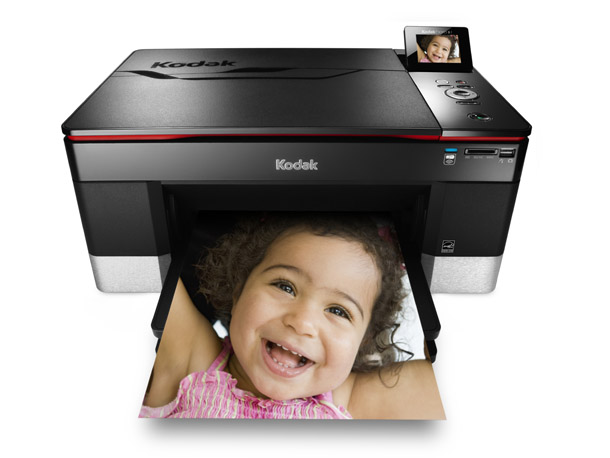Film technology makes better digital prints
Technology developed for Kodak film production enables better inks

Technology developed for Kodak film production enables better inks to be made for the company's inkjet printer cartridges.
According to Robert Ohlweiler, Kodak's Director of Consumer Inkjet for Europe, Africa and Middle East, Kodak's inkjet printers use pigment based inks and thanks to technology developed for its film production, Kodak is able to grind the pigment finer than any other manufacturer.
The pigment particles are also more uniform than usual and both these facts enable Kodak prints to be made with better colour and smoother gradations.
Despite the finer pigment particle sizes, Kodak can't quite match Epson for its minimum droplet size though. The new Kodak Hero printers, for example, use droplets of around 2.7 picolitres (pl) and 6pl. Epson's Stylus Photo R3000 which also uses pigment ink, for instance, can produce droplets as small as 2pl.
Small droplet sizes allow finer details to be reproduced. However, they are difficult to achieve with pigment ink because it contains particles in suspension (rather than dissolved in solution) and unless the particles are very finely ground, the printer nozzles can become blocked.
Kodak's Hero printers have two sets of nozzles with different sizes to lay down the ink with the two different volumes. The larger droplets (around 6pl) are used for black text and yellow in images, while cyan, magenta and photo back are applied in 2.7pl droplets. This means the lighter colours are covered quickly, while the darker colours are applied subtly where necessary.
Kodak is unusual in using pigment based inks in its consumer level printers, most other manufacturers use dye based inks. Traditionally, dye inks produce more vibrant prints than pigment inks, but they are less stable and fade more quickly.
Get daily insight, inspiration and deals in your inbox
Sign up for breaking news, reviews, opinion, top tech deals, and more.